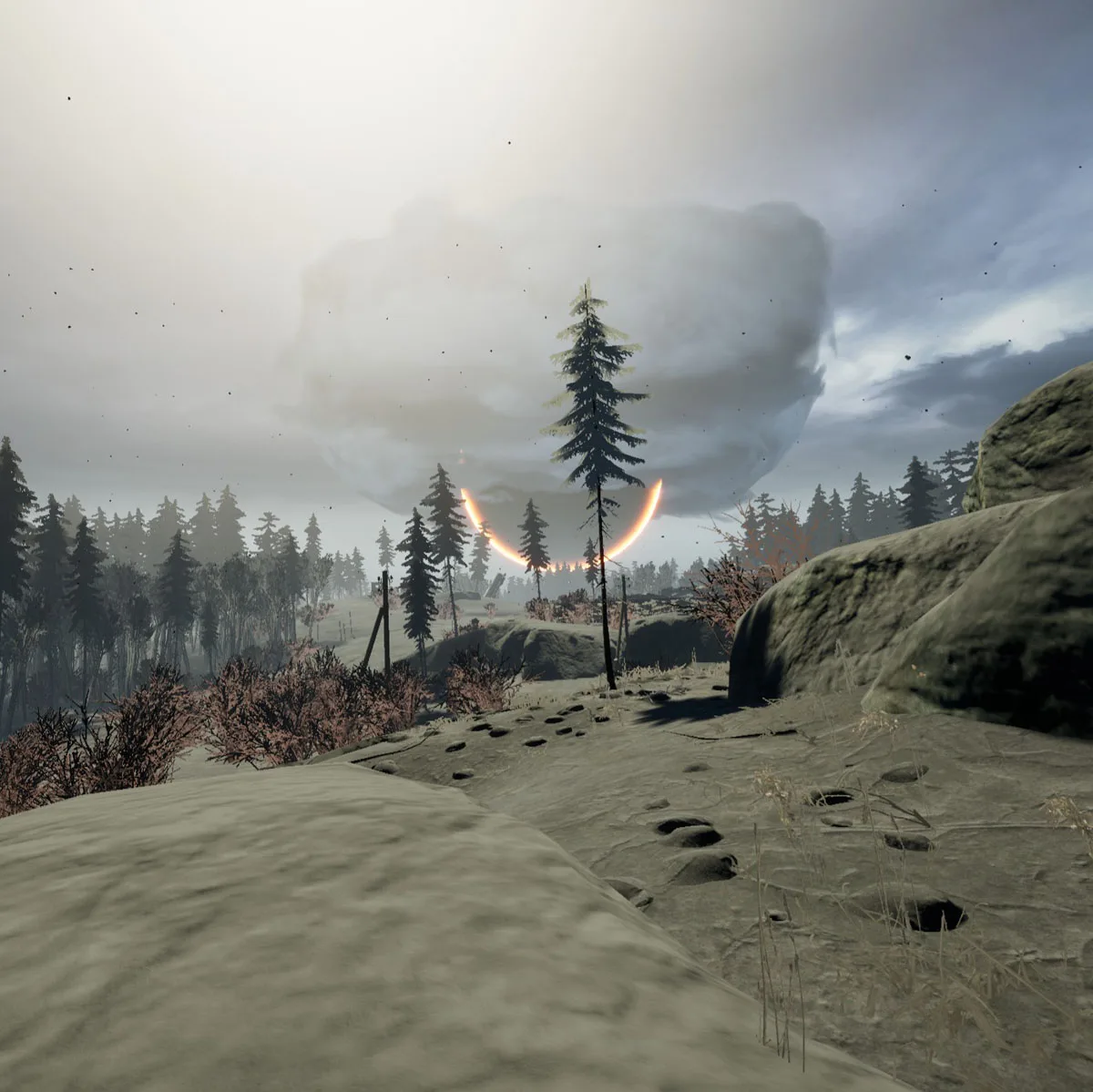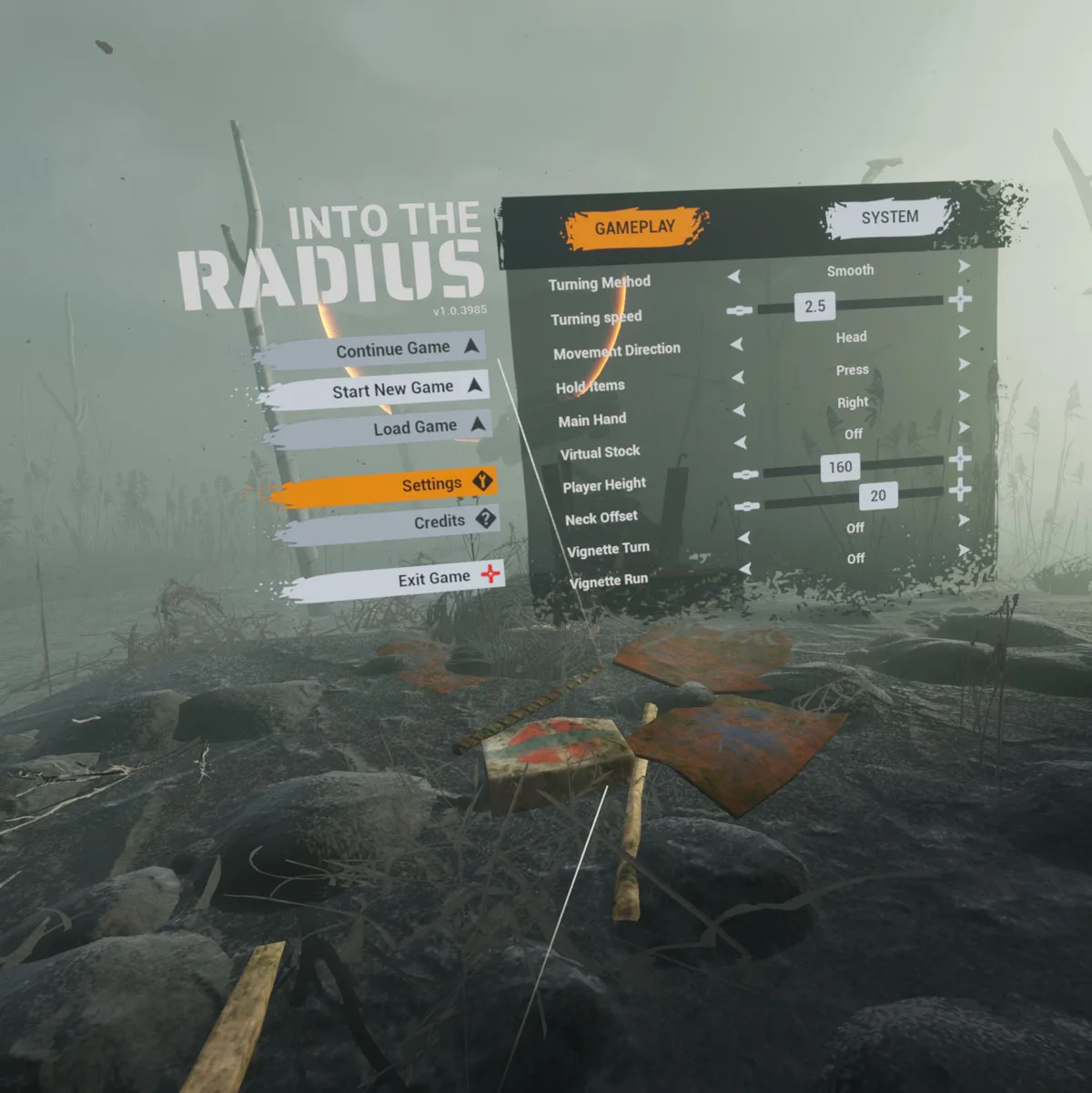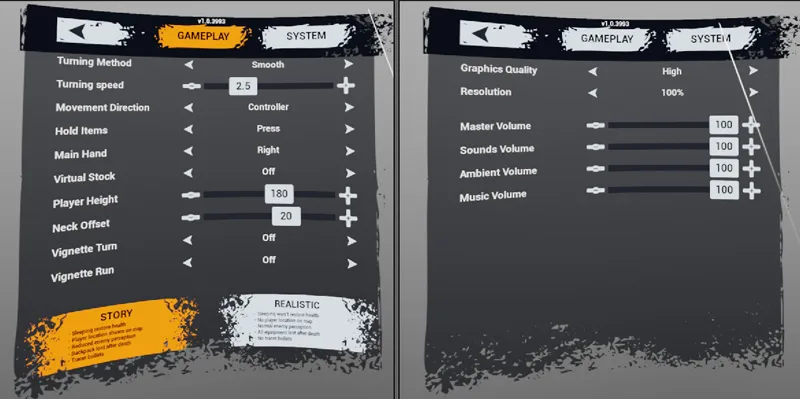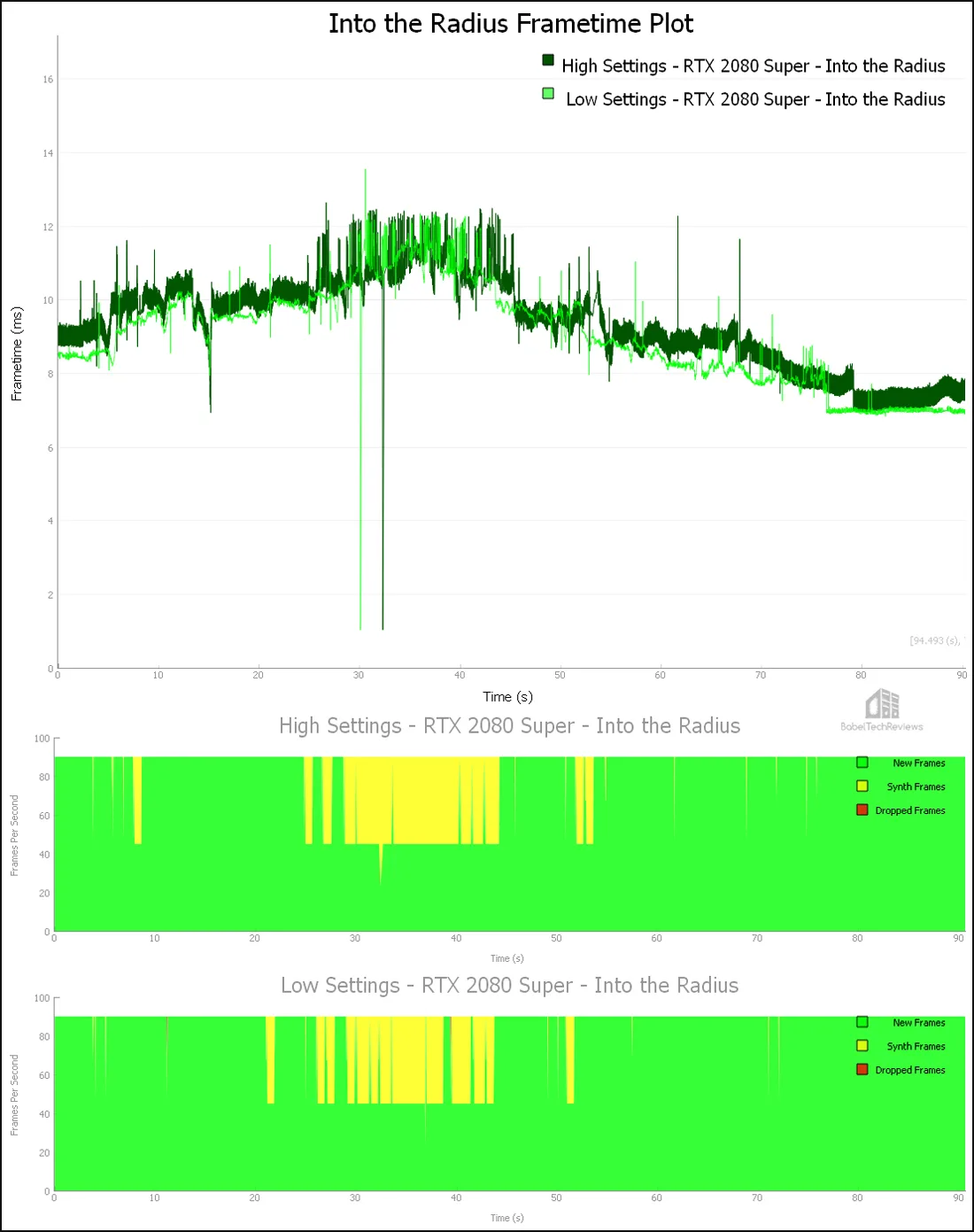The ‘Into the Radius’ VR-game & Performance Review Using the Vive Pro
This editor is a fan of the S.T.A.L.K.E.R. series and we jumped at the chance to review Into the Radius. Our review code came from the indie developer and publisher, CM Games (Creative Mobile) of Estonia, while it was still in Steam’s Early Access. It released on Monday and we are going to benchmark it with a RTX 2080 Super using the Vive Pro and FCAT-VR. Into the Radius is a single player stealth survival adventure/exploration game which is set in the dangerous large open world of the Pechorsk Exclusion Zone.
This reviewer has mixed feelings about Into the Radius. First, the good: It is S.T.A.L.K.E.R. VR with an incredible atmosphere. The bad: Like S.T.A.L.K.E.R. when it first released, Into the Radius has issues with bugs and physical interactions, and it is not yet fully polished nor well-optimized for performance.

We had just built a i9-10900K PC together with 32GB of DDR4 3600MHz on a brand new installation of Windows 10 64-bit, and our first hours spent playing Into the Radius were lost along with the game saves and screenshots when our new PSU shorted out the SSD, so we started over. Although we did not get to complete nor play it for as long as we would have liked, we have formed an opinion of the game and have also measured its performance using the Vive Pro, FCAT-VR and a RTX 2080 Super.
Into the Radius has better visuals than most VR games that really add to its spooky and intense atmosphere, and its performance demands on the video card are also higher since the game is a huge open world with a decent draw distance although there is still noticeable pop-in. The minimum recommended video card is a GTX 1070. It is important to know a game’s performance since a VR gamer does not want to risk VR upset or VR sickness by running with higher settings than the video card can handle.
Gameplay, Audio, Voice Acting & Replayability
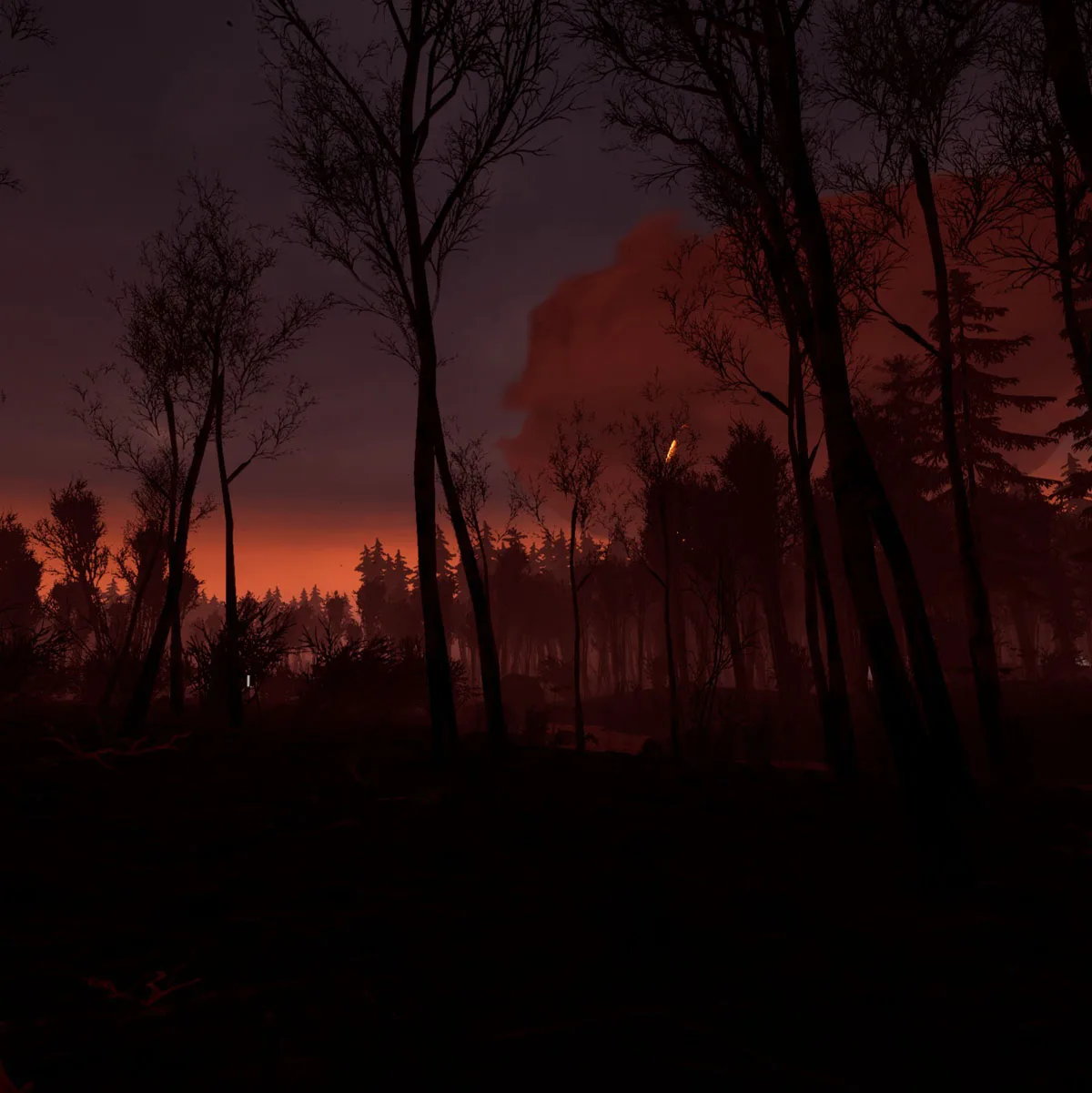
Although it is well-voiced in English, its Eastern European roots are obvious which give it a lot of personality. You become the explorer that is sent by the UNPSC to study the zone which is full of deadly anomalies and Radius entities, but who loses his memory upon arrival. You start out as a ‘changed’ one that the Radius won’t allow to leave or die, and you are valuable to your employer only for the artifacts you bring them. You will discover the backstory and uncover some mysteries of the Radius by finding and playing cassette tapes, and you have a otherworldly connection to Katya who may act as a guide at times.
The developers pay homage to S.T.A.L.K.E.R. and the original book, ‘Roadside Picnic’ (‘?????? ?? ???????’), and you are often referred to in-game as a Stalker. Into the Radius is a stealth exploration and adventure game with elements of horror, and you cannot just run guns-blazing through it. It aims for realism and realistic physical interactions with your weapons, backpack, and parts of the environment. For example, you draw your gun from your holster, put in your clip after adding one bullet at a time, take off the safety, cock and chamber the round, and then fire the gun. You had better be prepared before encountering any dangerous Radius entities. Climbing ladders is also done in a realist hand-over-hand manner that emulates motion in real life as do throwing probes to spot anomaly boundaries.
These realistic physical interactions are a big strength of Into the Radius but they are marred by imprecise controls. Hand tracking is good but sometimes the arms appear distorted while climbing, ruining immersion, much like when Boneworks first released. Just the simple task of opening a stash box or even picking out a specific item from the backpack can be a difficult and challenging experience that takes away from the game. We hope that the devs will address these issues because this hardcore game demands realism, and it should not become tedious because of control issues.
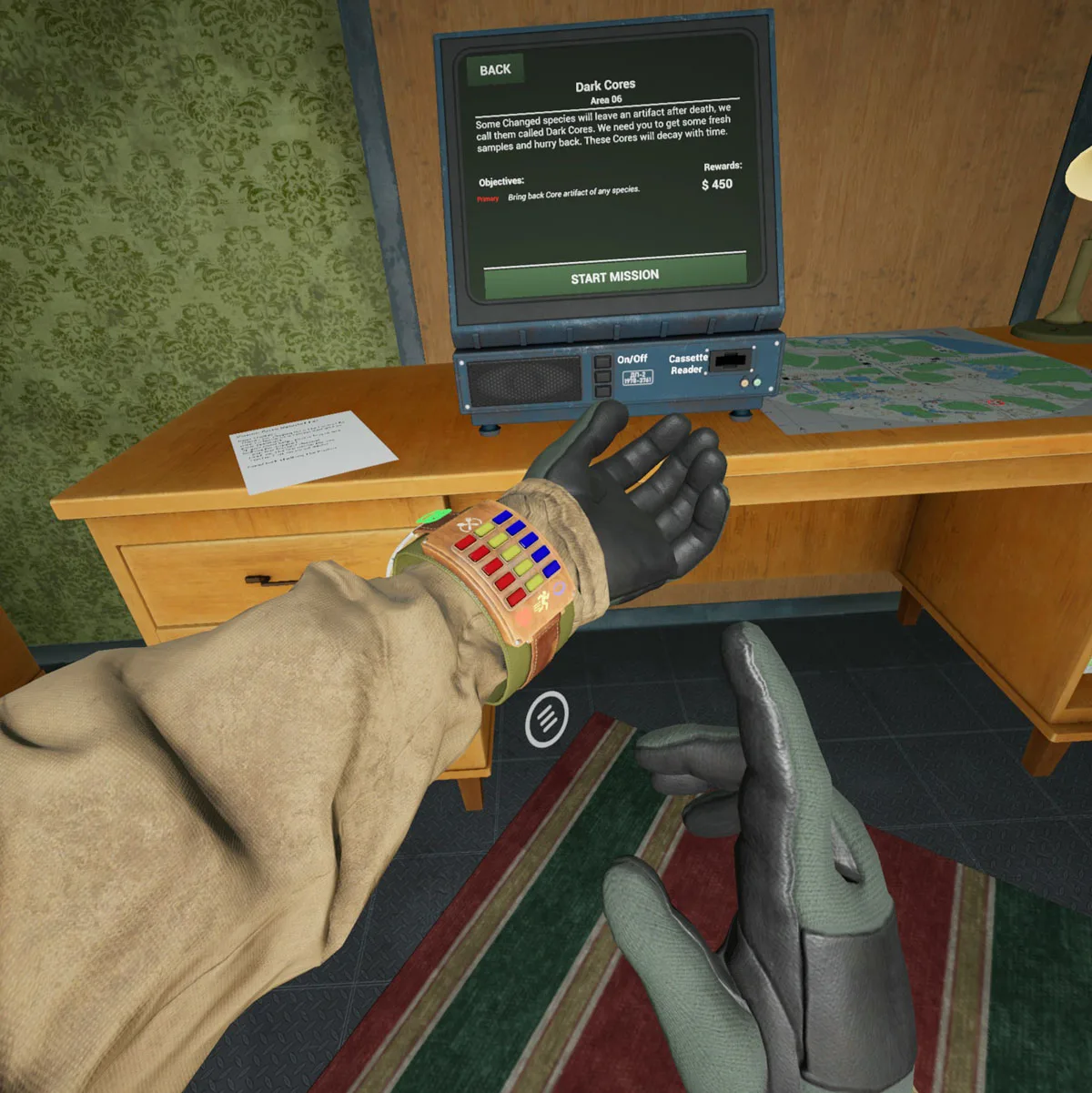
Into the Radius requires that a player micro-manage health, stamina, and fatigue. Restoring health damaged by anomalies or enemies requires using regeneration artifacts, a healing station, or sleeping (on lower difficulties). You cannot just run continually, and stamina must be replenished by eating chocolate bars or you will slow down and lose the ability to sprint. And sleeping is crucial and you cannot ignore it or you will start to yawn and your eyes will momentarily close until you drop on the spot causing you to lose time and stamina while you sleep. Good preparation may include bringing a sleeping bag for camping out in the zone – don’t worry, as long as you aren’t in active combat, enemy NPCs won’t attack you while you are asleep.
The player will get a home base to prepare for missions, and must upgrade and buy weapons here as well as sell artifacts and other valuable finds to upgrade and repair your weapons, buy items for survival and exploration, and to pay bills – you must pay $500 a month rent.

Thorough preparation is required before venturing out into the zone on a mission. You will carry a backpack that can be stuffed with an almost unlimited amount of items if they are arranged right, but the important tools for immediate use are in the vest and pouches. Your knives, side arm, and probes are ready for instant access. Your watch simply tells the time but it also includes a compass that always points to the Radius, and you will use it in conjunction with your map to locate where you are and to find your objectives.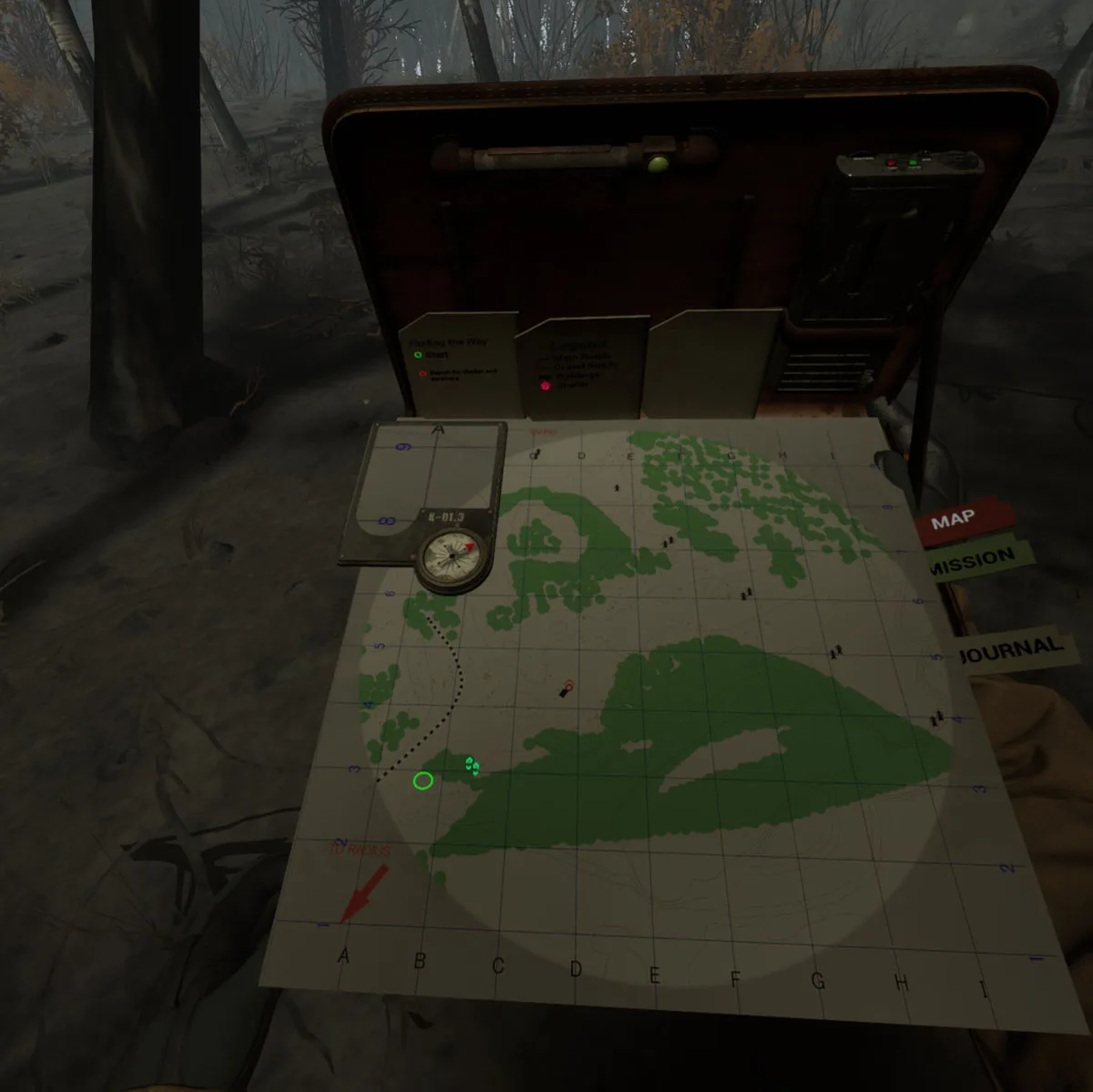
The map shows many of the zone landmarks but does not show your current position. Just as in real life without a GPS, you have to orient and relate your map to the landmarks that you actually see to deduce your location. The map basically shows your entry point into the zone and your objectives. It’s up to you to actually find them, and a magnifying glass is even included to help you get a closer look at the map terrain’s details.
There is no anytime save during the very long mandatory tutorial where you will complete your first mission partially guided. There is much the tutorial does not cover, and the game expects you to figure out many things out for yourself. The game is hardcore and it is very easy to be damaged and to die. As you complete missions and earn money from bringing back artifacts, there are upgrades and items for sale that will make your life much easier in the zone.
Into the Radius covers a very large open world map made up of areas that are quite different from each others. However, all of the areas are dangerous and a player must proceed slowly to avoid artifacts or attracting the attention of the numerous entities from the Radius. Audio clues are positional and valuable and you must pay attention to them.
The environment is well-rendered, capturing the desolation and atmosphere of the spooky zone, and the NPC sounds are disturbing, adding a distinct element of horror. A player will feel the tension increase, and a sense of dread is palpable when progressing into a dangerous area and that is far more intense than many so-called horror games. Into the Radius reminds us of S.T.A.L.K.E.R. with strong feelings of dread and feelings of extreme isolation in a deadly zone.
How long Into the Radius will take depends on how quickly a player gets used to the controls and to the game mechanics. It appears that there are more than 15 hours of content. We wish that we had more time to complete the game before the review posted.
The Graphics, Settings, and Benchmarking the RTX 2080 Super with FCAT VR
Into the Radius’ graphics are very good and the game was developed exclusively for premium VR HMDs. The bare minimum video card is a GTX 1070 and there are plenty of options for locomotion comfort.
There are no user options for changing individual graphics settings other than High, Medium, and Low presets. There is also a slider to drop or subsample the resolution down to 65%, or to increase the resolution to 115%.
We benchmarked Into the Radius using the very latest drivers from NVIDIA (451.67) with a RTX 2080 Super Founder’s Edition at stock settings, and the i9-10900K was also at default.
Performance
Here is the Frametime plot of the RTX 2080 Super run at High and at Low settings at 100% resolution.
The RTX 2080 Super averages 109.54 Unconstrained FPS on high settings but only delivers 80.63 FPS which means it cannot handles 100% resolution without depending on Motion Smoothing/reprojection, and 10% of its frames are synthetic. What is surprising is that by dropping down to the lowest settings, the RTX 2080 Super now averages 114.30 Unconstrained FPS but still only delivers 82.14 FPS with 8% synthetic frames. What isn’t surprising is that High doesn’t look very different from Medium or from Low.
It appears that the devs still have work left to optimize performance as playing with motion smoothing is not ideal because of artifacting which may become upsetting. Fortunately, there are plenty of comfort options for movement. There were also occasional Warp misses that translated into obvious stutters.
Let’s head for the conclusion.
Conclusion: Recommended!
Into the Radius is not a AAA game with a large studio behind it. It’s a huge open world indie game with a ton of content that is continually being improved by very passionate devs who appear to be responsive to their growing community of players. Since the game released on Monday, it has got a major 1.5GB patch, a couple of 50MB patches, and a 200MB patch. It looks like the devs will continue to patch, improve, and update it.
Into the Radius will not appeal to everyone as it is a difficult and slow-paced stealth adventure exploration survival game where you will never be able to run through the zone with your guns blazing. It’s hardcore and very unforgiving, and it absolutely does not hold your hand. If you like adventure, love depth and physical realism, and don’t mind waiting for the devs to address the performance and interaction issues, this game is a gem.
Into the Radius is available on Steam, and currently it’s on sale on all platforms until July 27 and discounted 30% off the regular $29.99 price down to $20.99 which is a good deal for a large open world VR game. It is playable on the Valve Index, on Windows Mixed Reality, available on Viveport Infinity for the HTC Vive/HTC Vive Cosmos, as well as from the Oculus Store for the Oculus Rift and Oculus Quest (with-link), and also available from the Humble Store.
We can’t give Into the Radius a score, but we recommended it even as unpolished as it is. It isn’t for everyone – there is no easy or story mode – but for those who are up for a challenge, it is intense, deeply atmospheric, immersive, and compelling. We really like it and plan to revisit it in a few months to check out improvements and changes, and to play through it. And we may add it to BTR’s ever-growing VR benchmarking suite then.
BTR is going to be down starting Friday afternoon PT as we migrate to an upgraded VPS server. We’ll be back up during the weekend with a much improved experience, and we will review the EVGA Z490 FTW motherboard to see how close we can get to a 5.3GHz overclock on all 10 cores.
Happy Gaming!

